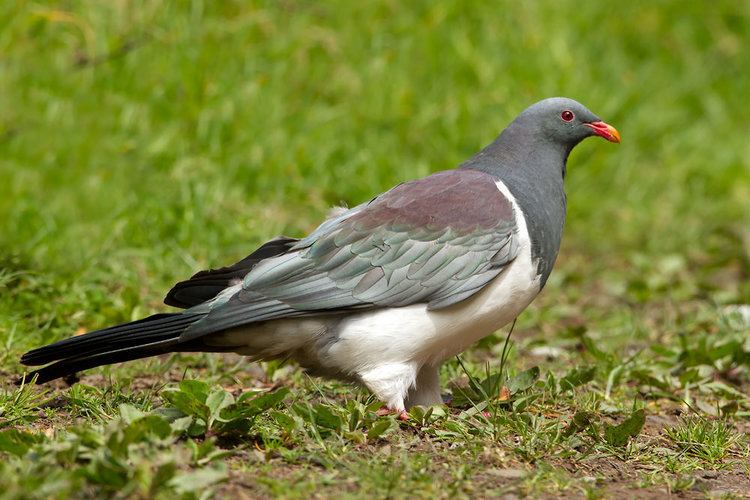Kingdom Animalia Family Columbidae Scientific name Hemiphaga chathamensis Rank Species | Class Aves Genus Hemiphaga Phylum Chordata Order Columbiformes | |
 | ||
Similar Hemiphaga, Columbiformes, Chatham gerygone, Norfolk pigeon, Chatham oystercatcher | ||
The Chatham pigeon, Chatham Island pigeon, or parea (from Moriori) (Hemiphaga chathamensis) is a bird endemic to the Chatham Islands in New Zealand. Growing to 800g in weight and 55 cm in length, the Chatham pigeon is a relative of the kererū or New Zealand pigeon (Hemiphaga novaeseelandiae).
While rated vulnerable by IUCN, it is considered critically threatened in New Zealand. After the population decined to 40 birds in the late 1980s, conservation efforts have helped their numbers increase to around 500 birds, largely restricted to the southern forests of Chatham Island/Rekohu (particularly those around the Tuku River). A few have been seen elsewhere on Chatham Island and also further afield on Pitt and South East Islands. They were common in the 1870s but habitat destruction and predation by mammalian invasive species reduced the population to only 40 birds by 1990. Since then, predator control and stock fencing in and around the Tuku valley have resulted in improved breeding success which has led to rapid population growth.
Traditionally considered a subspecies of the kererū, it was proposed in 2001 to be distinct enough to be raised to full species status.
Because the Chatham Islands have been separated from the mainland of New Zealand for so long, the Chatham pigeon has evolved differently from its mainland relative, the kererū. There are a number of differences between the two pigeons. The Chatham pigeon is around 20% heavier than the kererū and it has a heavier bill. Unlike the kererū it has an enlarged hind toe which helps it to scrabble about on the forest floor. The Chatham pigeon generally nests from June to October, while the kererū nests from September to January. The Chatham pigeon nests in bracken or fern near the ground while the kererū prefers to nest in a tree, out of harm's way. The Chatham pigeon's egg is also much bigger.
Chatham pigeon feed on the fruits of the hoho (Pseudopanax chathamicus), matipo, mahoe and karamu tree, and the foliage of mahoe, hoho and clover. The succulent fruits of the hoho are especially sought after. They are at their best in August and September, which coincides with the peak of the pigeon's breeding season.
Chatham pigeon are renowned for their spectacular flying dives, especially by the males, to attract a mate. Most breed at 1 to 2 years of age, laying just one egg. Chicks fledge at about 45 days old and become independent at 3 months. They have a life expectancy of up to 25 years.
